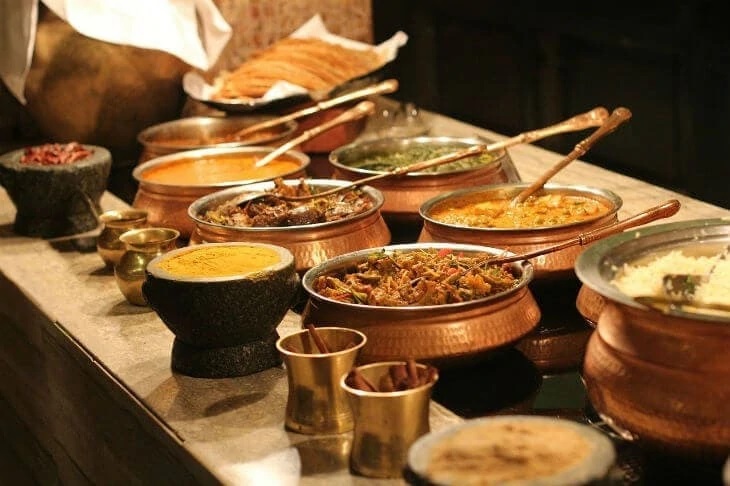
10 Facts You Might Not Know About Best Ladakh Tour by Delighted Journey
Imagine a distant land of rugged mountains, traditional villages and myriad Buddhist monasteries perched on rocky spurs. Imagine a corner of Tibet but in another country. I’m taking you with me to northern India, more precisely to the Ladakh region. I spent about ten days here, useful time to note down some curiosities that you probably won’t be aware of. Just as I did for Mongolia and Iran, here too I thought I would list some aspects that could be unusual for our culture or simply report particularities that I noticed during my last best Ladakh tour.
- Ladakh is made up of two districts: Leh, predominantly Buddhist, and Kargil, predominantly Muslim. Leh and Kargil also correspond to the two largest cities in the region, of which Leh itself is the capital.
- Especially in Leh you will encounter many stray dogs moving through the streets of the city. I have never had any problems, many sleep during the day or meekly wander along the streets, accustomed to the presence of people. On the contrary, in the middle of the night, dogs seem to wake up improvising concerts almost everywhere.
- Moving among the monasteries of Ladakh you will wonder why each complex is characterized by a main color, almost always yellow or red. In modern Tibetan Buddhism there are four main schools of thought: 1) Nyingmapa, founded by Padmasambhava; 2) Kagyupa, founded by Tilopa; 3) Sakyapa, created by Gonchok Gyelpo and his son Gunga Nyingpo; 4) Gelugpa, founded by Tsong Khapa Lobsang Drakpa (also called Je Rinpoche), and led by the Dalai Lama. Each order is characterized by the use of elaborate crescent-shaped hats, each of a different color, worn by followers during ceremonies: the Gelugpa use a yellow hat, the Kagyupa a white or red hat, and the Nyingmapa and Sakyapa a hat red. There is also a suborder of the Kagyupa sect, the Karma Kagyupa, known as the black hat sect because its leader, Karmapa Lama, uses this color for his ceremonial headdress. This suborder is finding more and more evidence in Ladakh in recent years.
- The best months to visit Ladakh are those from May to August, corresponding to the monsoon season for the rest of India. In this period the climate is dry and it rains very rarely. Temperatures generally fluctuate between 10°C at night and 20/22°C in the central hours of the day at an altitude above 3000 metres. It’s a completely different story in the winter months: temperatures can even drop to -30/40°C with frequent snowfall.
- The geographical position of Ladakh, on the border with China and not too far from Pakistan, means that this is a largely militarized territory. It is easy to come across very long columns of soldiers along the mountain roads, it is often mandatory to stop at checkpoints to check your documents. Always carry your passport with you.
- Apricot, locally known as “chulli,” is the most widely grown fruit in Ladakh. Introduced from China or Central Asia, the apricot has become an integral part of the culinary landscape of this region. Different varieties are grown in Ladakh which differ in taste and size. The most commercialized are Halman and Latse-Karpo. In the cold winter seasons, when people prefer to stay in their homes, dried apricots represent a nutritional alternative to the fresh fruit popular in summer. Traveling by car, at least along the main roads, it will not be difficult to find women selling apricots along with apples, dehydrated fruit and cashews on the roadside or near checkpoints.
- When entering one of the many Buddhist monasteries in the best Ladakh tour you will often come across a photo of a child, sometimes with the words “missing”. Gedhun Choekyi Nyima was elevated by the Dalai Lama as the 11th Panchen Lama, the second highest office of Tibetan Buddhism on May 14, 1995. In the same year, the People’s Republic of China kidnapped this child and he was replaced with a person favorable to Chinese policies in Tibet. Considered the youngest political prisoner in history, his fate is unknown to date.
- Best Ladakh Tour takes its name from the high number of mountain passes present in its territory: “La” means Pass while “Dakh” means many so the name means “land of many passes”. These were once used by the population exclusively for the transport of food and livestock or as communication routes to reach new places to settle. Only later did these passages open to trade. The high altitude has made people build temples, and hang bells and prayer flags to avoid any misfortune. In Ladakh there are the two highest motorable passes in the world, at least according to what is written on the monuments erected at the top of the passes: the Khardung La Pass would reach 5,602 metres, followed by the Taglang La Pass at an altitude of 5,359 metres. GPS has shown that the measurement of Khardung La Pass is incorrect as it would reach 5,328 metres. To dispel the thesis of how the latter is considered the highest pass in the world, there are also passes located at a greater height.
- The Buddhists of Ladakh consider the Dalai Lama their supreme spiritual leader, an incarnation of the living Buddha. The current Dalai Lama, the fourteenth, originally known by the name Tenzing Gyatso was brought to Lhasa and proclaimed the new spiritual leader of the Tibetan people on February 22, 1940. Because of his resistance to the Chinese occupation of Tibet, the Dalai Lama was forced to leave Tibet itself in March 1959, thus becoming an icon of Buddhist politics. He currently lives in Himachal Pradesh, in Dharamsala, in his residence in McLeod Ganj, where the Tibetan government in exile is also based.
- Along the roadsides of Best Ladakh Tour, it is common to come across signs and columns painted yellow on which funny phrases in English relating to road safety are transcribed: “After whiskey driving risky”, “Safety on the road is safe tea at home”, “ Let your insurance policy mature before you” are just a few examples. These sentences are the result of the Himank project, inaugurated in August 1985. Himank is responsible for the construction and maintenance of roads and related infrastructure. Himank staff are forced to work on difficult terrain and sometimes in extreme weather conditions, in most cases limited to working over a short four-month working season, before the roads become blocked again by heavy winter snowfall and harsh temperatures. Most of the workers come from the Bihar region and are nicknamed Dumkas, after the village, Dumka, where the Himank workers are recruited.
Best Ladakh Tour By Delighted Journey



